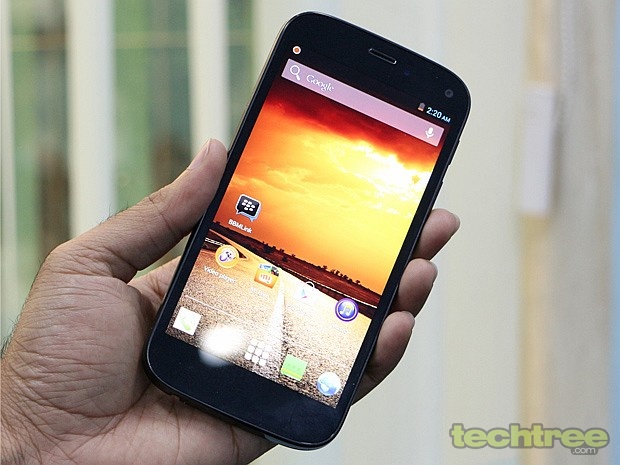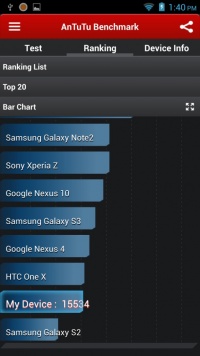-
Chandrakant 'CK' Isi
04th Dec 2013
Micromax Canvas Turbo A250
Street Price: Rs 18,000
The phone that Hollywood actor Hugh Jackman loves to juggle his life with has landed in our office. Dubbed Canvas Turbo A250, this is Micromax's first full-HD phone. Moreover, there's a 13 megapixel camera to boot. So is it a big leap from the Canvas 4 or just a refresh?
Design And Build
The Canvas Turbo looks like a shrunken Doodle 2. It features an edge-to-edge glass that looks neat. What's missing here is a scratch-resistant glass, so be careful with the screen. Although it's not a unibody design, the battery is non-user replaceable. And since the back-panel cannot be opened, both the SIM-slots have been placed on the left-side of the phone.The phone features three capacitive navigation keys that are only visible when the phone has been unlocked. The Lock/Power button is placed on the right side. The Volume Rocker is right besides that. Strangely, the 3.5 mm jack is at the bottom, while the micro-USB port sits on top.

Micromax has taken the liberty of copying HTC One's iconic metallic rear, which looks quite decent. One stupid design decision here is that the phone has a glossy plastic on its sides, which doesn't go well with the matte back-panel.

Display
The Canvas features a 5" IPS screen with pixel dimensions of 1920x1080. Going by numbers, that's around 440 pixels-per-inch. And boy, it's sharp. Being an IPS panel, the colour reproduction is quite good, and viewing angles are wide. However, the display is not as vibrant as found on some of the similarly priced phones such as Gionee Elife E6.Basic Specs
The Canvas Turbo is powered by a quad-core MTK 6589T chipset clocked at 1.5 GHz. It has 2 GB of RAM and PowerVR SGX544 GPU for gaming. Other features include Wi-Fi, 3G, Bluetooth 4.0, A-GPS, and 2000 mAh battery. The phone has 16 GB internal storage, off which around 12 GB is user accessible. The phone lacks a microSD card slot for further expansion of storage.User Interface
The Canvas ships with Android 4.2.1 (Jelly Bean). As far as the interface is concerned, Micromax hasn't made many changes to the stock Android ROM, save for the icons and a few pre-installed apps. For starters, the iFloat Tray is cheap imitation of Assistive Touch feature of the iPhone. It gives quick access to media player, messaging, setting, and browser. Apart from that, there's a 'Pop Up' functionality that allows you to multitask with a split screen view. Similarly, Video Pinning enables windowed video playback. So that you can surf the web and watch videos simultaneously.


If all this gimmicky stuff wasn't enough, Micromax has duly covered 'Blow To Unlock' feature. When enabled, you can unlock the phone by blowing air. This feature uses phone's microphone to detect the air flow, and unlock the device. The phone comes pre-installed with a few apps such as File Manager, Opera Mini, Foneclay, Hike, and Spuul. Moreover, you also get Micromax's exclusive services such as M! Live, Music Hub, Game Hub, and M! Security.The phone provides quite a smooth user-experience. However, it does lag a bit while rendering the transition effects. It's especially noticeable while swiping from Apps tab to Widgets section. We ran a couple of famous benchmarks on the phone. Here are the results - AnTuTu: 15,534; Quadrant: 4753.


Camera
The phone comes with a 13 mp auto-focus camera with LED flash. We did snap a few indoor test shots, which haven't really managed to impress us. However, we won't pass a judgement, until it has been thoroughly tested.In A Nutshell
Apart from a full-HD (1080p) screen and 2 GB of RAM, the Canvas Turbo isn't really a major upgrade over its predecessor. Both the phones offer a 13 megapixel camera and Android 4.2.1 Jelly Bean. So an average Joe won't find much of a difference between the Canvas 4 and Turbo. However, considering that Micromax's latest flagship pegged at Rs 18,000 is only 2k pricier than its predecessor, makes its case strong. To find out if this phone is worth buying, stay-tuned for our detailed review.
Preview: Micromax Canvas Turbo A250 Hands-On | TechTree.com
Preview: Micromax Canvas Turbo A250 Hands-On
Our initial impressions about the smartphone that Hugh Jackman loves to juggle his life with.
News Corner
- DRIFE Begins Operations in Namma Bengaluru
- Sevenaire launches ‘NEPTUNE’ – 24W Portable Speaker with RGB LED Lights
- Inbase launches ‘Urban Q1 Pro’ TWS Earbuds with Smart Touch control in India
- Airtel announces Rs 6000 cashback on purchase of smartphones from leading brands
- 78% of Indians are saving to spend during the festive season and 72% will splurge on gadgets & electronics
- 5 Tips For Buying A TV This Festive Season
- Facebook launches its largest creator education program in India
- 5 educational tech toys for young and aspiring engineers
- Mid-range smartphones emerge as customer favourites this festive season, reveals Amazon survey
- COLORFUL Launches Onebot M24A1 AIO PC for Professionals







TECHTREE